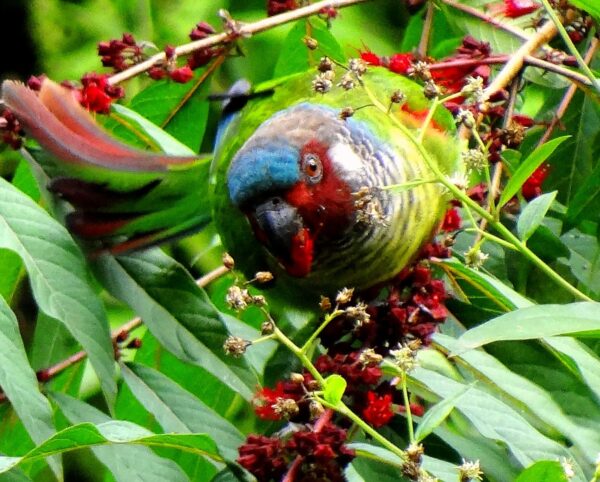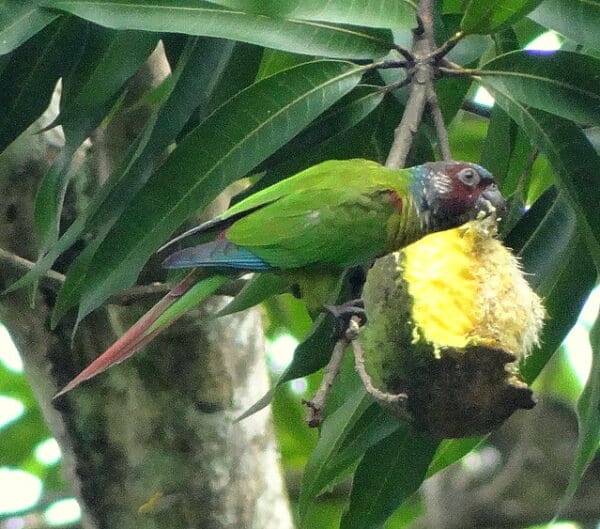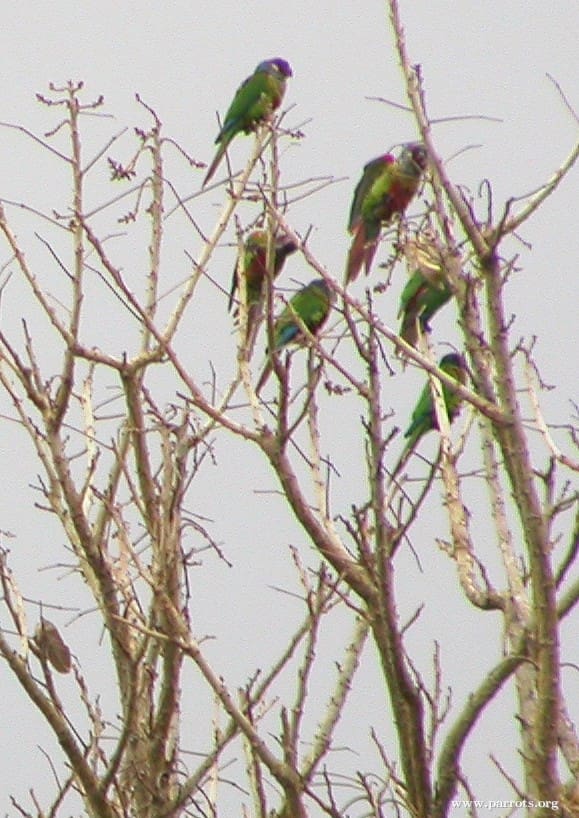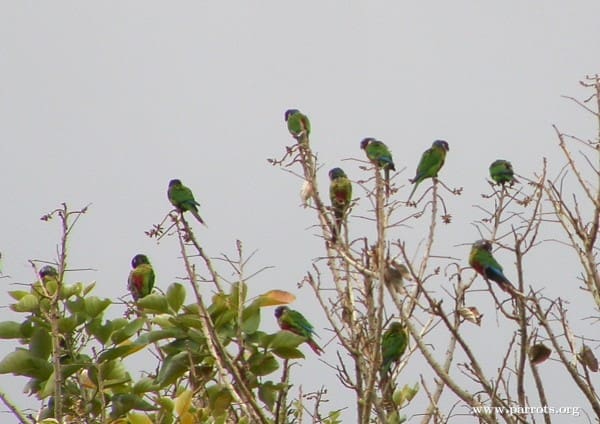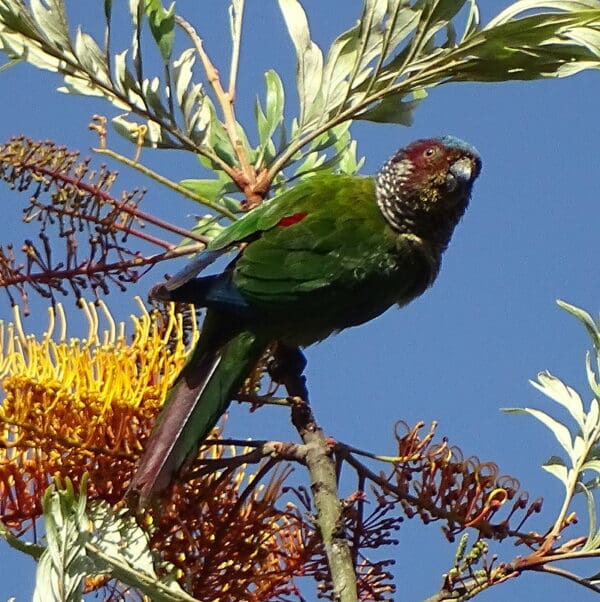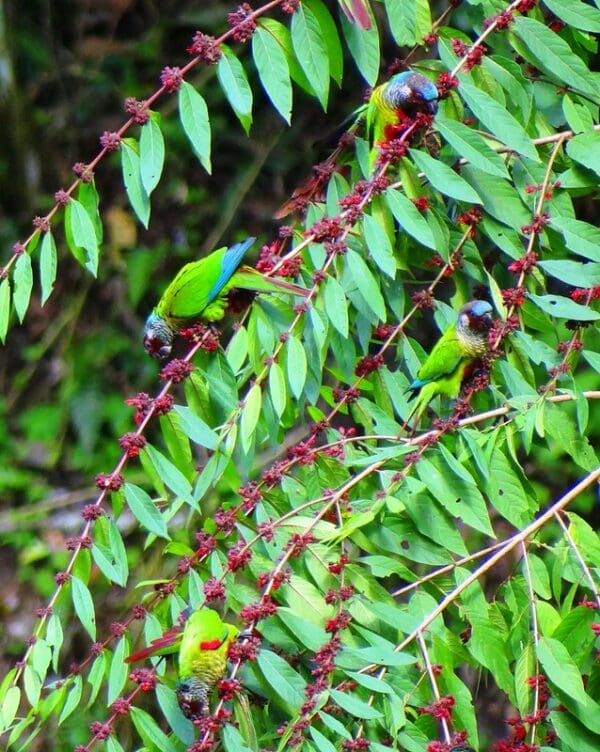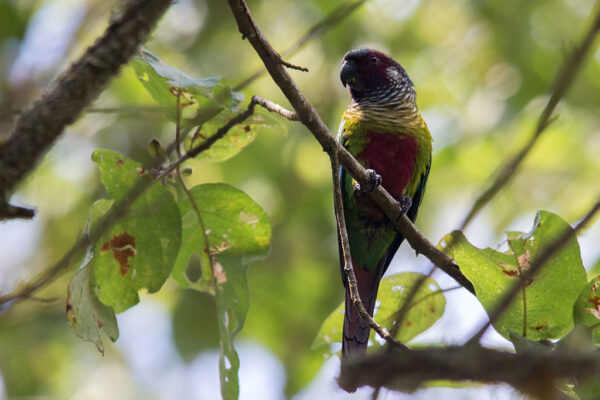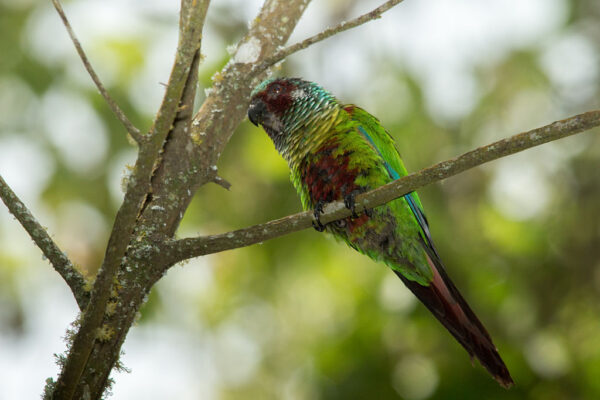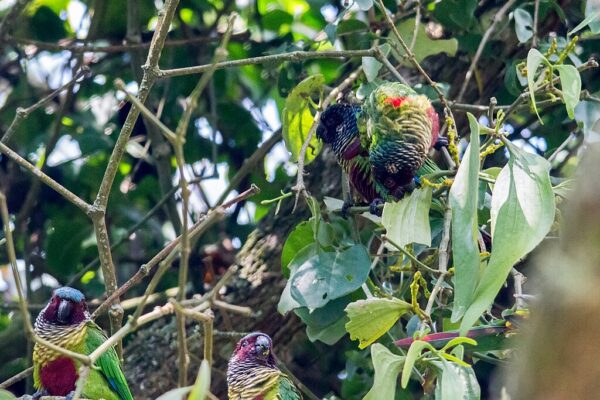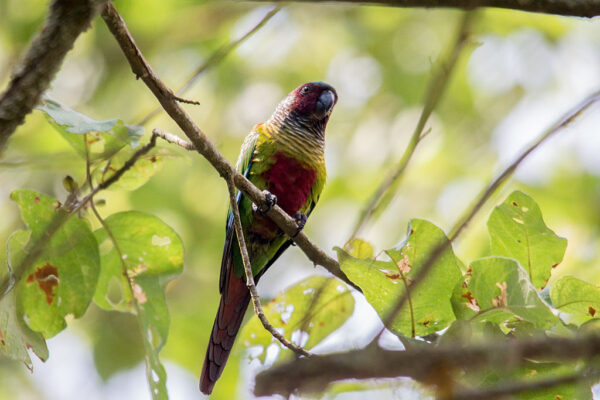Emma’s Conure
Also known as:
Venezuelan Parakeet
Also known as:
Venezuelan Parakeet
![© barloventomagico [CC BY-SA 2.0] via Flickr A wild Emma's Conure feeds on fruits](https://parrots.org/wp-content/uploads/1990/04/Emmas-Conure-barloventomagico-e1731688467304-100x100.jpg)
![© barloventomagico [CC BY-SA 2.0] via Flickr A wild Emma's Conure feeds on a fruit](https://parrots.org/wp-content/uploads/2023/01/wpt_Emmas-Conure_1343-9-100x100.jpg)
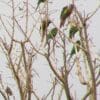
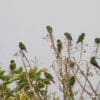
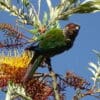
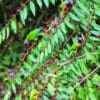
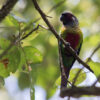
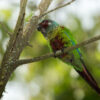
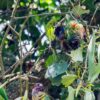
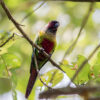
DID YOU KNOW?
Emma’s Conure was once considered conspecific with Painted Conure (Pyrrhura picta).

Pyrrhura

emma
Size:
23 cm (9 in)
Weight:
Probably 50 g (1.75 oz).
Subspecies including nominate:
two: P.e. emma, P.e. auricularis
Colour Adult:
P.e. emma: both adults brown/maroon face; off-white ear coverts; green/blue crown to nape and sides of hindneck; green/blue throat and sides of foreneck, margined off-white; green/brown breast with yellow/white and brown barring; brown/red centre of abdomen and patch from lower back to upper tail coverts; red bend of wing; green tail tipped with brown/red; bare cere white. Eye ring bare and white. Eye dark brown.
P.e. auricularis: both adults as in emma, but with larger more white ear coverts; upperparts and flanks slightly darker green and less yellow; bare cere. Eye ring bare and grey.
Colour Juvenile:
P.e. emma: in general duller than adults; dull blue crown washed with grey/brown; less extensive brown/red on centre of abdomen, with scattering of green feathers; tail shorter.
Call:
Calls are described as loud and harsh, particularly when alarmed or distressed.
More Information:
Content Sources:
BirdLife International
Cornell Lab of Ornithology/Birds of the World
Parrots: A Guide to Parrots of the World, Juniper and Parr, 1998
Parrots of the World, Forshaw and Cooper, 1977. 2010 edition
Parrots of the World, Forshaw, 2006.
Parrots in Aviculture, Low, 1992.
Lexicon of Parrots, Thomas Arndt.
Captive Status:
Uncommon
Longevity:
Up to 35 yrs
Housing:
Aviary or suspended enclosure, minimum length 2 m (6.5 ft).
Diet:
Fruit such as: apple, pear, orange, banana, pomegranate, cactus fruits, forming about 30 percent of the diet; vegetables such as: carrot, celery, green beans and peas in the pod; green leaves such as: Swiss chard, lettuce, sowthistle, dandelion, chickweed; spray millet; small seed mix such as: canary, millet, and smaller amounts of oats, buckwheat, safflower and a little hemp; soaked and sprouted sunflower seed; cooked beans and pulses, boiled maize and complete kibble.
Enrichment:
Are voracious chewers so provide bird-safe, unsprayed flowering, fir, pine and willow branches, perches, heat sterilized pine cones, wooden and vegetable tanned leather toys. Also enjoy bathing so provide overhead misters or shallow bowls of water.
Nest Box Size:
Vertical box 8″ x 8″ x 28″ (20.3 cm x 20.3 cm x 71 cm).
Clutch Size:
4-5
Fledging Age:
6-7 weeks
Hatch Weight:
—
Peak Weight:
—
Weaning Weight:
—
World Population:
Unknown, decreasing.
IUCN Red List Status:
Least Concern
CITES Listing:
Appendix II
As conspecific with Pyrrhura leucotis.
Threat Summary:
Not globally threatened. Population trend is not known is thought to be in slow decline due to land-use changes. Not a major target for the cage bird trade but sometimes persecuted as an agricultural pest. Remains fairly common throughout its small range; very common on the Paria Peninsula in E Sucre and in Guatopo National Park, Miranda. Considered Data Deficient at the national level in Venezuela. Possibly may be of conservation concern due to its small range; therefore population estimates are urgently needed.
Range:
P.e. emma: Coastal mountains of N Venezuela, form Yaracuy and Carabobo east to Distrito Federal and interior mountains of southern Aragua, Miranda and western Anzoategui.
P.e. auricularis: Mountains of NE Venezuela, in eastern Anzoategui, Sucre, and northern Monagas.
Habitat:
Found up to 1700 m (5576 ft) in humid and wet forests and forest edges in hilly areas.
Wild Diet:
Diet probably includes flowers and nectar of Ochroma, fruits of Cecropia angustifolia, seeds and some larvae.
Ecology and Behaviour:
Resident, moving seasonally in response to food and breeding. Seen in pairs, but mostly in flocks of up to 15 individuals. Feeds at all levels of canopy.
Clutch and Egg Size:
4-5 broadly elliptical eggs, 26.5 x 20.5 mm (1 x 0.8 in).
Breeding Season:
Probably May-July.
Related Links:
—
